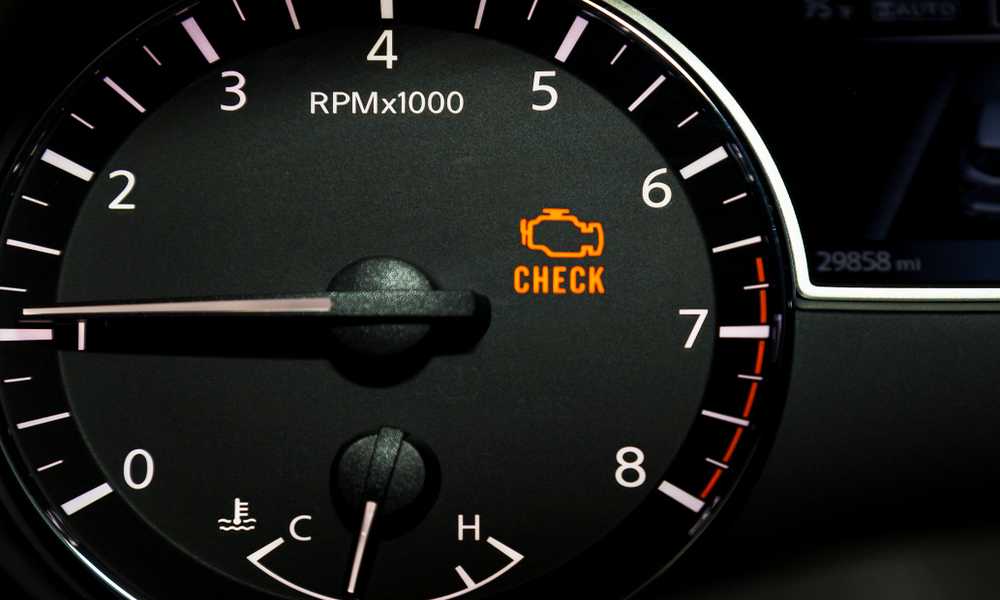As a driver, there’s nothing quite as alarming as feeling your car sputter and seeing the check engine light come on. It can leave you wondering what could be causing this issue, and how to fix it before you’re stuck on the side of the road. Fear not! In this blog post, we’ll go over 10 causes of car sputtering check engine light on and provide some helpful fixes so that you can get back to smooth driving in no time. So buckle up and let’s dive into it!
Tell me the cause of car sputtering check engine light on?
There are a variety of reasons why your car may sputter with the check engine light on. One common cause is a failing catalytic converter, which can lead to decreased power and acceleration. Faulty oxygen sensors can also be an issue, as they monitor the level of oxygen in your car’s exhaust system and send signals to the engine control unit (ECU). If these sensors malfunction, it can cause the fuel-to-air ratio to be off, leading to sputtering.
Another potential culprit is an exhaust manifold leak. This happens when there’s a crack or hole in the manifold that allows air into places where it shouldn’t be – like before the O2 sensor – throwing off readings and causing sputtering.
Dirty fuel injectors are another possibility. Over time, they can get clogged with dirt or debris from low-quality gasoline. Similarly, a dirty mass airflow sensor – which monitors how much air enters your engine – can cause issues by providing inaccurate readings.
Bad spark plugs might also lead to engine sputtering since they play a role in igniting fuel inside each cylinder. Vacuum leaks could likewise mess up that balance between air and gas inflow necessary for proper combustion.
Fuel system issues such as low pressure or blockages could make your car run poorly too; so does ignition coil failure due to lack of voltage going through its winding wire coils while running at high speeds. EGR valve malfunction may also occur if not maintained properly over time by preventing excess nitrogen oxide emissions from being released back into atmosphere during operation of vehicle engines
1.Failing catalytic converter
The catalytic converter is an essential component of your car’s exhaust system. Its primary function is to reduce the toxic emissions that are released into the environment by converting harmful gases into less harmful ones.
A failing catalytic converter can cause sputtering, stalling, and poor acceleration in your vehicle. When it fails, you may notice a sulfur-like smell coming from your exhaust or see black smoke emanating from your tailpipe. One cause of a failing catalytic converter is overheating. If other components in your engine malfunction or fail to operate correctly – such as spark plugs or fuel injectors – they may create additional heat that can damage the converter over time.
Another potential issue with a failing catalytic converter is clogging. Over time, contaminants and debris can accumulate within the converter’s internal honeycomb structure and restrict airflow through the system. If you suspect that your car’s catalytic converter has failed, it’s crucial to have it inspected by a professional mechanic immediately. Driving with a faulty catalytic converter not only harms the environment but also risks significant engine damage if left unaddressed.
2.Faulty oxygen sensors
Faulty oxygen sensors are one of the most common causes of a check engine light being illuminated and car sputtering. These small electronic devices measure the amount of oxygen in your vehicle’s exhaust system, which is used to control fuel injection timing and air-to-fuel ratio.
If an oxygen sensor becomes faulty, it can cause misfires in the engine or make it run too lean or rich. This can lead to decreased performance, lower gas mileage, and increased emissions output.
One way to tell if you have a faulty oxygen sensor is by checking your vehicle’s diagnostic codes using an OBD-II scanner. If there’s a code related to your oxygen sensor (such as P0130), then you’ll need to replace it.
Replacing an oxygen sensor is relatively easy and inexpensive. You may be able to do it yourself with some basic tools and instructions from your vehicle manual or online resources. However, if you’re not comfortable doing so, take your car into a trusted mechanic who can diagnose the issue for you properly.
Fixing a faulty oxygen sensor should be done promptly since driving with one will negatively affect fuel economy and could lead to more significant problems down the road.
3.Exhaust manifold leak
The exhaust manifold is a crucial component of the car’s exhaust system. It collects gases from the engine cylinders and directs them to the catalytic converter, which then converts harmful emissions into less harmful ones. However, if there’s a leak in the exhaust manifold, it can cause sputtering and other issues.
An exhaust manifold leak usually occurs due to age, wear and tear or physical damage. The most common symptom of this issue is a loud ticking or popping sound coming from under the hood. You may also notice decreased power when accelerating or an increase in fuel consumption.
If you suspect that your car has an exhaust manifold leak, take it to a mechanic as soon as possible. Once they’ve identified the issue, they’ll need to repair or replace the damaged part depending on its severity.
Ignoring an exhaust manifold leak can lead to more serious problems such as reduced engine performance and increased emissions output. Don’t wait until it’s too late – get your car inspected by a professional today!
4.Dirty fuel injectors
Dirty fuel injectors can cause your car to sputter and experience poor performance. Fuel injectors spray fuel into the engine’s combustion chamber, but over time they can accumulate dirt and debris that clogs them up.
When this happens, the fuel flow is restricted which results in an inconsistent supply of gasoline to the engine. This inconsistency causes a decrease in power output and makes it difficult for your car to accelerate properly.
One tell-tale sign that you have dirty fuel injectors is if you notice decreased gas mileage or increased emissions from your exhaust pipe. Another sign is if you hear a knocking sound coming from under the hood when you accelerate.
To keep your fuel system running smoothly, it’s recommended that you have your fuel injectors cleaned every 30,000 miles or so. You can also use a quality fuel injector cleaner additive regularly as directed by its instructions.
By keeping your fuel injectors clean and functioning properly, you’ll ensure optimal engine performance and avoid costly repairs down the road.
5.Dirty mass airflow sensor
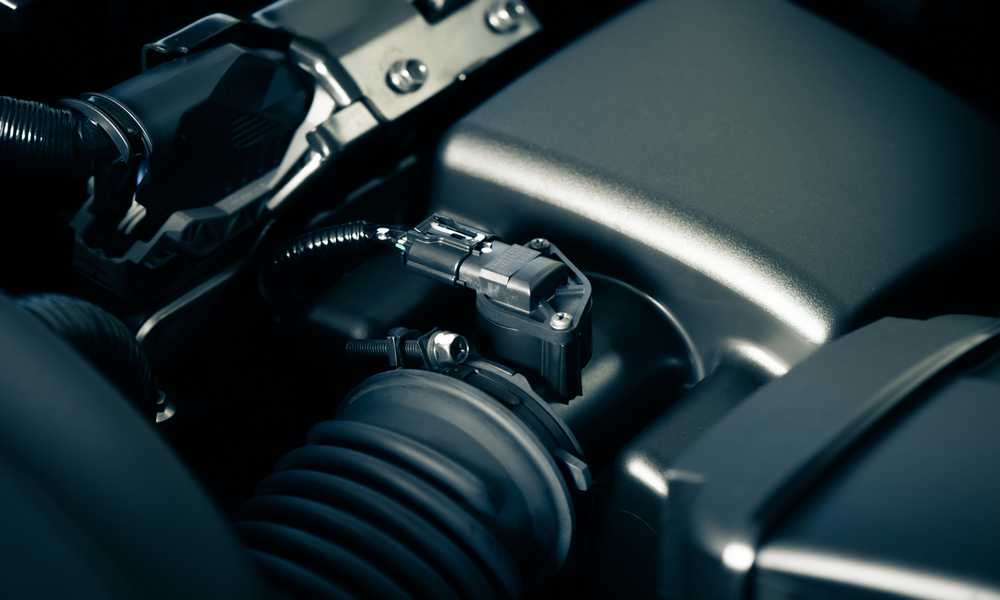
The mass airflow sensor is a crucial component of your car’s fuel injection system. It measures the amount of air that enters the engine to determine how much fuel to inject. However, over time, this sensor can become dirty and cause your car to sputter or hesitate.
When the mass airflow sensor becomes dirty, it can’t accurately measure the amount of air entering the engine. This causes an imbalance in the air-to-fuel ratio, which leads to sputtering and stalling.
Cleaning or replacing a dirty mass airflow sensor is relatively simple and inexpensive. In most cases, you can clean it yourself using electrical contact cleaner. However, if cleaning doesn’t solve the issue, then replacement may be necessary.
It’s important not to ignore any symptoms of a dirty mass airflow sensor as driving with one could lead to further damage down-the-line causing additional repairs or replacements
If you suspect that your car’s sputtering is due to a dirty mass airflow sensor, don’t hesitate to have it checked immediately by a certified mechanic before more costly issues arise!
6.Bad spark plugs
Bad spark plugs can also be the reason why your car is sputtering and showing a check engine light. Spark plugs are responsible for igniting the air-fuel mixture in the combustion chamber, which powers your engine. If they’re not working correctly, it can lead to misfires or incomplete combustion.
Over time, spark plugs can become worn out due to heat and usage, causing them to fail. This failure will result in poor fuel economy, loss of power and acceleration issues.
One sign that you may have bad spark plugs is if you notice rough idling when starting up your vehicle. When this happens, one or more cylinders aren’t firing correctly.
If left unaddressed, bad spark plugs can even damage other engine components like catalytic converters and oxygen sensors leading to higher repair costs down the line.
To fix this issue promptly, it’s best to consult with a trusted mechanic who will replace any faulty spark plug(s) with new ones ensuring optimal performance from your vehicle’s engine.
7.Vacuum leak
Vacuum leaks are a common cause of engine sputtering and can be caused by several things. A vacuum leak occurs when there is an unintended air entry into the intake system, which will disrupt the fuel and air mixture that provides power to your car’s engine.
One possible cause of a vacuum leak is a cracked or damaged hose. Over time, hoses can become brittle and crack due to exposure to heat and other environmental factors. This allows air to enter the system in places it shouldn’t, resulting in sputtering.
Another possible culprit for vacuum leaks could be issues with your car’s gaskets. Gaskets provide seals between different parts of the engine, including between the intake manifold and cylinder head or throttle body. If these start to wear out or become damaged, they may allow unwanted air into the system.
A failing brake booster can also cause a vacuum leak since this component relies on suction from the engine’s intake manifold for power assistance while braking.
It is essential that you take care of any vacuum leaks promptly as they can lead to more significant problems down the line if left unchecked. Symptoms like rough idling should prompt you to get your vehicle checked by an expert mechanic who understands how engines work.
8.Fuel system issues
The fuel system of your vehicle is responsible for providing the engine with the necessary fuel to run. Any issues in this system can lead to sputtering and a check engine light turning on.
One potential issue could be a clogged fuel filter, which can cause a decrease in performance and efficiency. A damaged fuel pump can also affect the flow of gasoline, leading to sputtering or even stalling.
Additionally, if there are leaks in any part of the fuel system, air may enter into it. This can result in an imbalanced air-fuel ratio and lead to sputtering as well.
It’s important to note that using improper or low-quality gasoline can also harm your car’s fuel system. It might contain contaminants that damage certain components like injectors over time.
It’s essential to have your car inspected regularly by a qualified mechanic who will ensure proper maintenance of all its systems including its fueling mechanism.
9.Ignition coil failure
Ignition coil failure is another common cause of car sputtering and the check engine light coming on. The ignition coil is responsible for providing the spark that ignites the fuel in your engine’s cylinders. If this component fails, it can lead to misfires and reduced power.
One sign of a failing ignition coil is a rough idle or difficulty starting your car. You may also notice decreased acceleration or an overall lack of power when driving.
There are several reasons why ignition coils fail, including age, wear and tear, exposure to heat and vibrations, and electrical issues. Regular maintenance can help prevent ignition coil failure by ensuring that all components are functioning properly.
If you suspect that your ignition coil has failed, it’s important to have it checked by a professional mechanic as soon as possible. Ignoring this issue could lead to more serious problems down the line, such as damage to other engine components or even complete engine failure.
10.EGR valve malfunction
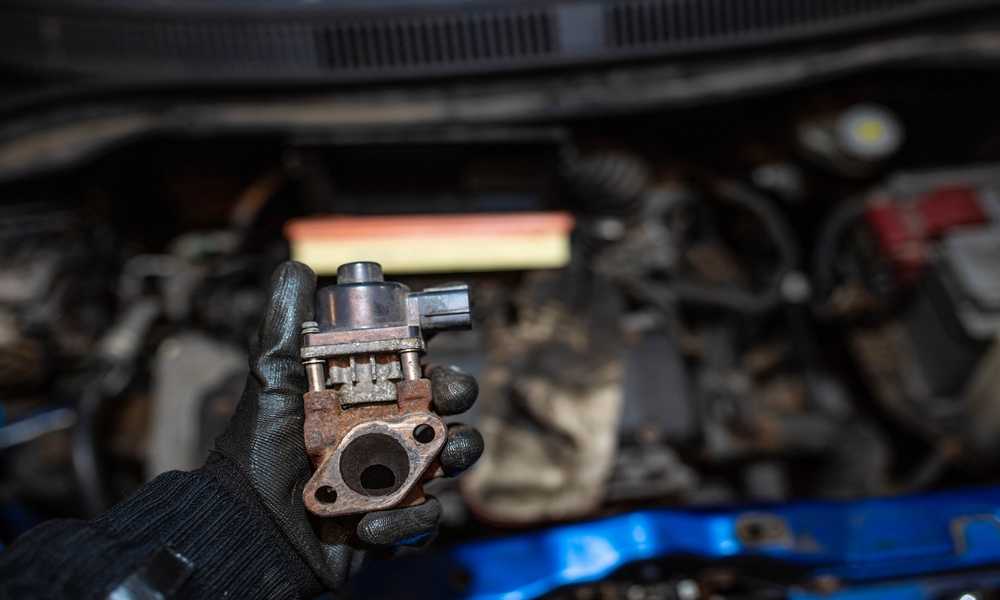
The EGR valve, or Exhaust Gas Recirculation valve, is responsible for recirculating exhaust gases back into the combustion chamber to reduce emissions. When it malfunctions, it can cause a variety of issues including engine sputtering and stalling.
One common issue with the EGR valve is carbon buildup. Over time, carbon can accumulate inside the valve which can restrict airflow and cause it to stick open or closed. This can lead to rough idling and decreased performance.
Another issue that may arise from a malfunctioning EGR valve is a vacuum leak. If there’s a problem with the diaphragm in the valve, it may not be able to regulate vacuum pressure correctly which could result in air leaks.
Additionally, if the EGR system isn’t functioning properly, you may notice an increase in fuel consumption as well as black smoke coming out of your tailpipe.
If you suspect your car’s sputtering is due to an EGR valve malfunction, take your vehicle to a trusted mechanic who can diagnose and fix any issues before they become more severe.
What should I do if my car sputters and the engine light is on?
If your car sputters and the engine light comes on, it can be a sign of several issues. The first thing you should do is pull over to a safe location and turn off the engine. Check for any visible signs of damage or leaks under the hood.
Next, try restarting the car to see if the issue persists. If so, it’s time to take action. One option is to use an OBD-II scanner to read the error code from your vehicle’s computer system. This device will provide information about what triggered the check engine light.
Once you have determined what caused your car to sputter, consider whether it is something you can fix yourself or if you need professional assistance. For minor issues such as dirty spark plugs or air filters, these are things that most drivers can handle themselves with basic tools and knowledge.
However, for more complex problems like faulty oxygen sensors or failing catalytic converters, it may be best to take your vehicle into a trusted mechanic who specializes in diagnosing and repairing automotive problems.
Remember that ignoring warning signs like a sputtering engine could lead to further damage down the road – both figuratively and literally! So always play it safe when faced with unexpected car troubles by taking prompt action and seeking expert advice when necessary.
Why your car sputtering check engine light on?
If your check engine light is on and your car is sputtering, it could be due to a number of issues. One common culprit is a malfunctioning oxygen sensor, which can cause the engine to run too lean or too rich. Another potential cause is a dirty mass airflow sensor, which can lead to incorrect readings of the amount of air entering the engine.
A failing catalytic converter may also trigger both the check engine light and sputtering since it reduces exhaust emissions. Likewise, an exhaust manifold leak allows unfiltered air into the combustion chamber causing misfires that leads to stalling or jerking.
Dirty fuel injectors can restrict fuel flow leading to poor acceleration and stuttering while driving. A vacuum leak in your vehicle’s system will cause rough idling as well as hard starting problems.
Fuel system issues such as bad gas pump relay or clogged fuel filter may also be responsible for these symptoms due to insufficient fuel pressure. Ignition coil failure disrupts spark plugs from igniting their respective cylinders properly resulting in constant misfiring during idle and acceleration.
EGR valve malfunction where excessive amounts of carbon deposits are blocking its passage prevents fresh air intake thus causing disruption in overall performance.
In any case, if you experience these signs when driving then take action immediately by seeking professional assistance before it causes costly damages down the road.
Why is my car sputtering while I’m driving?
Experiencing a sputtering car while driving can be frustrating and dangerous, especially if you’re on a highway or in heavy traffic. There are several reasons why your car may start sputtering while driving.
One common cause of this issue is dirty fuel injectors. These injectors can become clogged with debris over time, causing the engine to receive an uneven fuel supply and leading to sputtering.
Another culprit could be a malfunctioning mass airflow sensor (MAF). This sensor measures the amount of air entering the engine and adjusts the fuel injection accordingly. When it fails, it can cause an imbalance in the air-fuel mixture, resulting in sputtering.
A bad spark plug or ignition coil may also be responsible for your car’s sputtering while driving. These components work together to ignite fuel in each cylinder of your engine. A faulty spark plug or ignition coil can disrupt this process, leading to misfires and ultimately causing your vehicle to stutter while driving.
Low-quality gasoline with high levels of impurities might also contribute to this problem as they leave behind residue that causes blockages within vital parts such as filters and valves.
Why is my car sputtering when I accelerate?
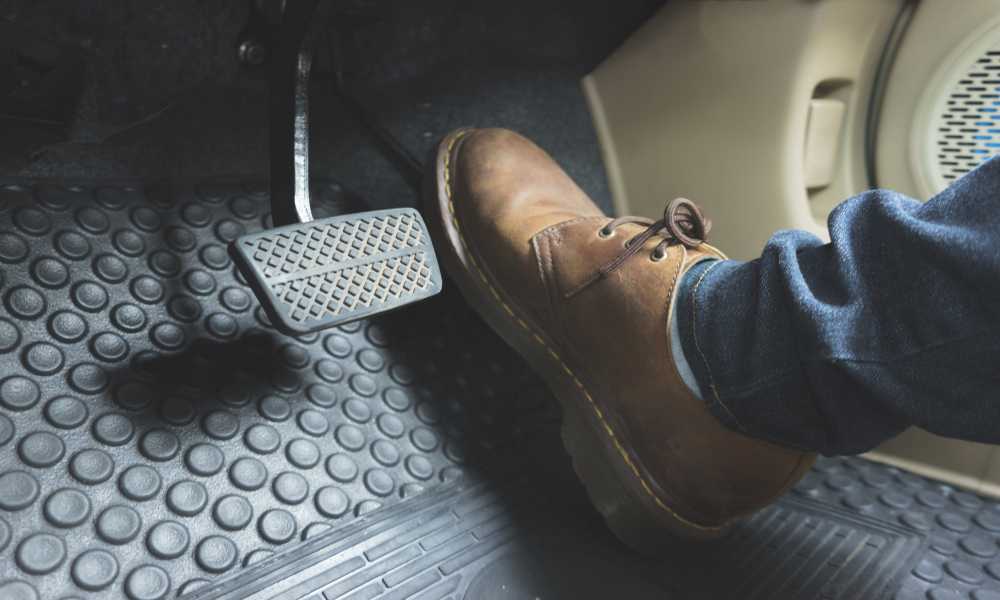
If your car sputters when you accelerate, it could be due to a variety of issues. One of the most common reasons for this is a clogged fuel filter. When the fuel filter gets clogged, it restricts the flow of gas to your engine, which can cause sputtering and stalling.
Another possible reason for sputtering during acceleration is a faulty spark plug or ignition coil. If either of these isn’t functioning properly, your engine won’t receive the needed spark at the right time, causing misfires and overall poor performance.
A dirty air filter can also cause sputtering while accelerating. A dirty air filter restricts airflow to the engine, making it harder for fuel to combust efficiently.
Low fuel pressure could be another culprit behind sputtering during acceleration. This could be due to a failing fuel pump or damaged fuel lines that aren’t providing enough gas pressure to keep up with demand.
It’s important not to ignore any signs of sputtering during acceleration as they may lead to more significant issues down the line if left unaddressed.
Why does my car sputter after changing spark plugs?
If your car sputters after changing spark plugs, it’s understandable to feel frustrated. After all, you likely made the change to improve performance and solve any issues that may have been present before. So why is this happening?
One possible reason for a sputtering engine following a spark plug replacement could be an incorrect installation. It’s crucial to ensure that each plug is properly seated and tightened according to the manufacturer’s specifications.
Another possibility is using the wrong type of spark plug for your vehicle. Different engines require different types of plugs, so double-check that the ones you’re using are compatible with your make and model.
It’s also worth considering other potential culprits for engine sputtering, such as clogged fuel injectors or a malfunctioning ignition coil. These issues could be unrelated to the recent spark plug change but can still impact overall engine performance.
If your car continues to sputter despite new spark plugs, it may be necessary to consult with a mechanic or perform further diagnostic testing.
Car sputtering no check engine light
If your car is sputtering but the check engine light isn’t on, it may be difficult to pinpoint the problem. However, there are a few potential causes that you can investigate.
One possibility is a clogged fuel filter. If your fuel filter is dirty or blocked, it can restrict the flow of gasoline to your engine and cause it to sputter. Another potential issue could be a malfunctioning ignition coil. The ignition coil sends electrical power to your spark plugs, which ignite the fuel in your engine’s cylinders. If this component fails, it can lead to rough idling and poor acceleration.
Other possible culprits include faulty spark plug wires or vacuum leaks in the intake manifold or hoses. It’s also worth checking your air filter for dirt and debris that could obstruct airflow into the engine.
While these issues may not trigger the check engine light, they should still be addressed promptly to ensure optimal performance from your vehicle.
Car sputters when starting then runs fine
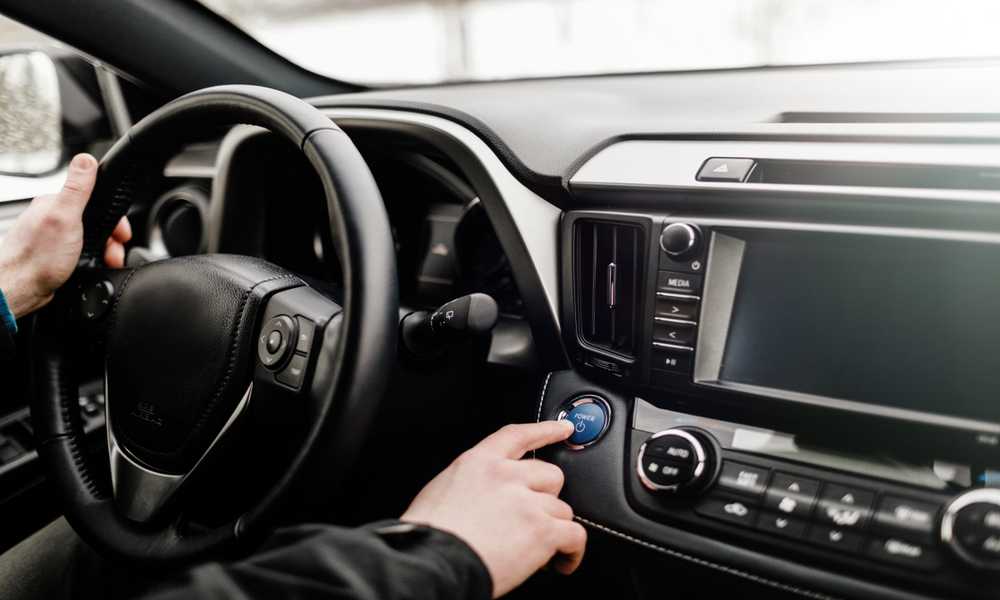
If your car sputters when starting but then runs fine, there could be a few potential reasons for this issue. One possible cause is dirty or clogged fuel injectors. When the engine is first started, the fuel injectors may struggle to deliver an adequate amount of gasoline to the engine, causing it to sputter and stall momentarily. However, once the engine warms up and the fuel system becomes more efficient, this problem may go away.
Another possibility is that there’s a problem with your ignition system. Faulty spark plugs or wires can sometimes cause an intermittent misfire upon startup that resolves itself as you drive. It’s also worth checking your battery voltage levels – if they’re too low during startup, it can sometimes lead to stalling and hesitation.
Consider whether you’ve recently changed any parts on your vehicle before noticing this issue – sometimes newly replaced components like air filters or sensors can throw off other systems in unexpected ways. Regardless of what might be causing the problem, it’s important to get it checked out by a mechanic if you’re experiencing ongoing issues with starting and running smoothly.
Final thoughts
Car sputtering and the check engine light coming on can be a cause for concern. But it’s important to remember that there are several reasons why this might happen. By understanding the common causes of car sputtering and knowing what steps to take when you encounter this issue, you can quickly diagnose the problem and get your vehicle back up and running smoothly.
Regular maintenance is key in ensuring that your car runs as smoothly as possible. Regularly checking your fluid levels, changing filters, and keeping an eye on potential issues will help catch problems before they become more serious.
If you’re ever unsure about why your car is sputtering or if the check engine light comes on, don’t hesitate to seek professional help from a certified mechanic. With their expertise and knowledge, they’ll be able to identify any underlying issues that may be causing these symptoms.
Remember: fixing small problems early could save you from expensive repairs down the line!
